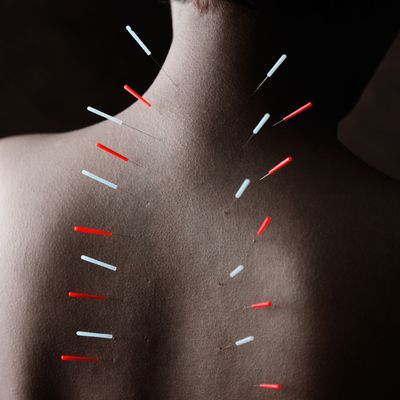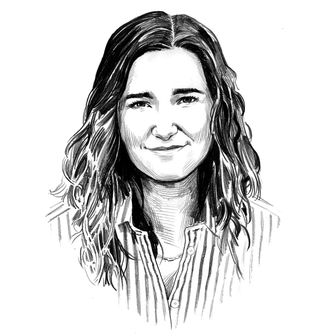
That acupuncture works to relieve certain conditions (particularly chronic pain) is well-documented, and largely undisputed, but exactly how it works has long remained something of a mystery. Skeptics tend to attribute its efficacy to the placebo effect, essentially arguing that patients who receive the treatment may feel less pain as a result, but only because they expect to. Others, especially those specializing in integrative medicine, say there’s a lot more going on than mere placebo effect — and a new study published in Scientific Reports might go a long way toward explaining how that’s possible.
The research, authored in part by Neil Theise, a clinician and professor of pathology at NYU Langone Health, argues that the interstitium, a fluid-filled space between our skin and our muscles, should be considered an organ unto itself — and, as the estimated volume of this space is 20 percent of the fluid volume of the body, says Theise, the largest organ in the body, at that. (You’ve probably seen the study making the rounds under slightly terrifying headlines about the discovery of a brand-new human organ.) Previously, the medical field has understood this space as densely packed connective tissue, but new, higher-powered microscopes show something completely different. “Now that we have a microscope that can look inside a living tissue, we can see that these are all actually fluid-filled spaces,” explains Theise. When the same tissue is examined outside the body, the fluid is drained, making these spaces collapse — which results in slides that show what looks like connective tissue only. Now, knowing that there’s fluid in what was previously understood only vaguely as “the third space” in the field of integrative medicine, researchers may be better equipped to understand how tiny acupuncture needles applied to specific points might be able to affect the entire body.
“Acupuncture has no anatomical correlate,” says Theise. “There’s no vein; there’s no artery; there’s no nerve corresponding to the meridian [the map of acupuncture points on the body].” Without any anatomical correlate, it’s been difficult for researchers to explain why a localized therapy like acupuncture could have such far-reaching effects. Knowing that the interstitium is filled with fluid could change that. “This is the layer of skin the acupuncture needle goes into,” says Theise. “There’s fluid in there. When you put the needle [into an accu-point], maybe the collagen bundles are arranged into a channel through which fluid can flow.” Studies show that “sham” acupuncture, or acupuncture in which needles are placed a centimeter off the meridian, doesn’t provide the same kind of pain relief that true acupuncture does: Sham accu-points may reduce pain in the immediate, local vicinity, but won’t have the widespread effects that true accu-points do. If accessing true accu-points allows interstitial fluids to travel throughout the body, that might account for the difference.
Dr. Shaista Malik, director of the Susan Samueli Center for Integrative Medicine at UC Irvine, says that in the cardiovascular world, specialists have long been aware of this “third space” (the circulatory system being the first, and the lymphatic the second), but agrees that the new research provides a deeper understanding of what it looks like, and what it does. “[The third space] was very elegantly described in this paper, because it’s showing that there’s organization and structure to this, while previously it was considered unstructured,” says Malik. “This is a really interesting finding that could go a long way in explaining why local therapy, stimulating only certain acupuncture points, could produce systemic effects. That’s not just true for acupuncture, but also for things like therapeutic massage, or Tai Chi and yoga.” Both Tai Chi and yoga have far-ranging effects that seem disproportionate to their cardiovascular exertion, says Malik, and it may be the case that exercises like these trigger a response in the interstitium, which then results in larger systemic effects.
While the interstitium itself isn’t “new,” Theise’s research is quickly proving instrumental in understanding what it is and how it works, and the potential ramifications go far beyond our understanding of acupuncture — Theise says the current research priority is studying how the interstitium may affect the formation and spread of cancerous tumors. This is not to say the study is without its naysayers, or minimizers. “There has been some pushback from people on Twitter,” says Theise. “People have been sending me pictures of textbooks from a hundred years ago with the word ‘interstitium’ in it. Yeah, we’re using the same word. But we’re showing the structure and distribution for the first time.” And it’s this part of the discovery — not so much what to call it, but what it does — that seems most likely to impact our understanding of bodily mysteries like acupuncture, and maybe even cancer.





